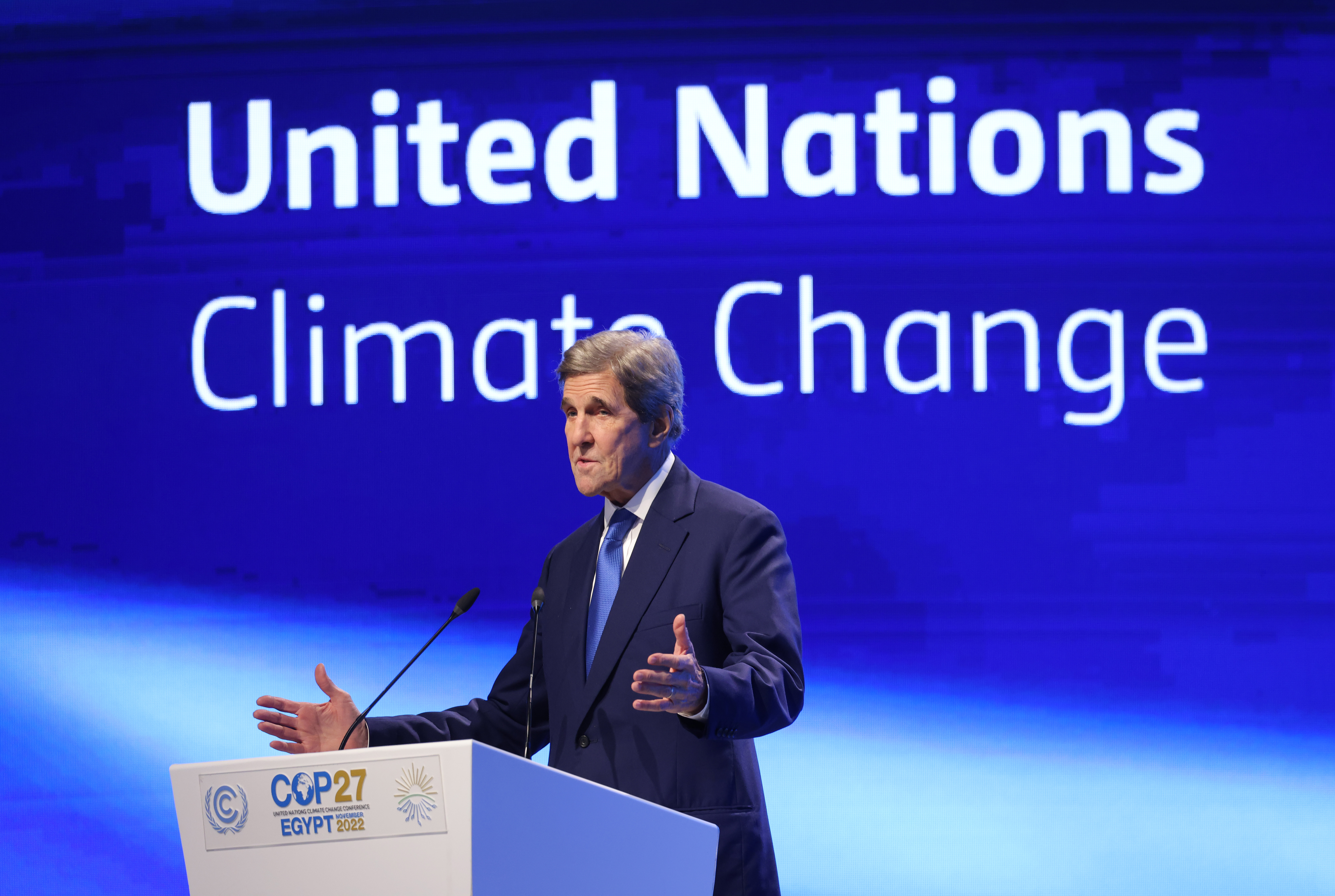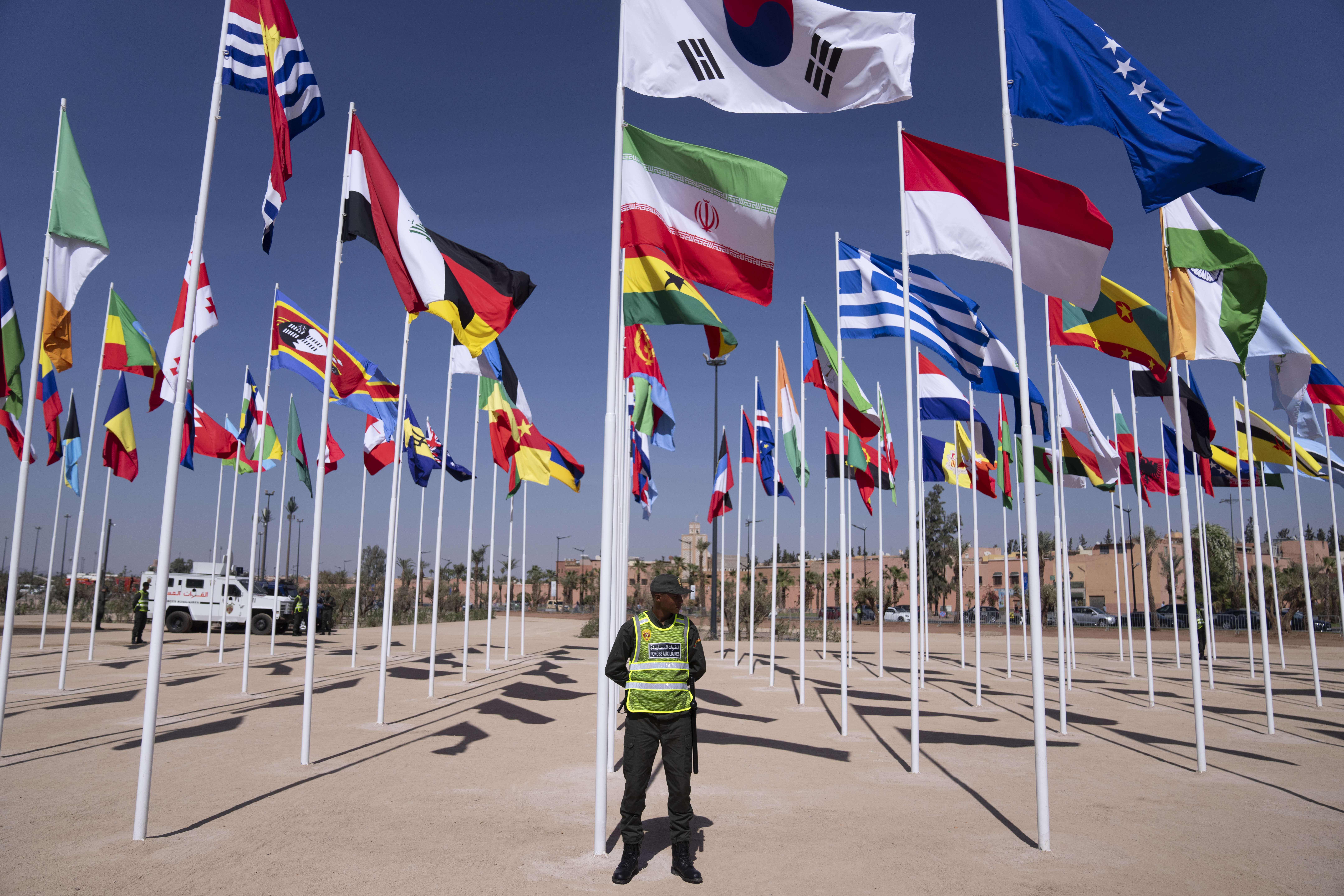
The Biden administration’s proposal to put the World Bank in charge of a fund that would pay poorer countries suffering irreversible climate damage is threatening to rattle U.N. climate talks that begin next month in Dubai.
The negotiating team led by climate envoy John Kerry reluctantly endorsed the idea of establishing a fund for “loss and damage” suffered by developing nations at U.N. climate talks last year, but countries left the details of how it would work — and where its many billions of dollars would come from — for later.
Developing nations have favored creating a fund similar to others established under the United Nations’ climate program, which operate as independent bodies under the U.N. They oppose the U.S. proposal to fold it inside the World Bank — an institution that many poorer nations see as a tool of the industrialized world to impose its economic policies.
Those nations say rich countries like the U.S. have long exerted too much control over the World Bank at the expense of those receiving aid. They note that even the U.S. is tacitly acknowledging the problem by pushing the bank to focus more on climate issues.
“It’s just a question of logic,” said Michai Robertson, lead finance negotiator for a bloc of island states that stands to receive much of the loss and damage money. “Why is there this pressure to push it back to this institution that we need to reform that was created in the ’40s by mostly colonial powers at the time?”
The fight over the new fund is a top issue this week for negotiators gathering for a final technical meeting before the U.N. climate talks.
The U.S. has long been at the center of conflict over the loss and damage fund. It has emitted more of the greenhouse gases warming the planet than any other nation since the mid-19th century. But it backed creation of the fund only after securing promises that the language establishing it would not equate compensation with legal liability. And it so far has not pledged any money for the fund.
The U.S. has practical reasons for placing the fund in the World Bank, according to people who have followed the bank. It’s the bank’s top shareholder and has decades of history with its efforts to lend money to developing nations. And some veterans of international climate talks say establishing a new fund whole cloth would take years, so placing it within the World Bank or another institution would be a far quicker way of delivering money to nations in need.
“Historically it's served as a useful anchor because it's a trusted institution where there can be trustee services,” said a State Department official involved in climate finance who is not authorized to speak publicly as a matter of practice. “But you know, there's other views as well. So that'll have to be settled over time.”
The loss and damage fund discussions are taking place at the same time that the U.S. and other countries are working to reshape the World Bank to address climate change by financing clean energy projects and helping countries adapt to a warmer world, a case U.S. officials made last week to the bank’s annual meeting in Marrakech, Morocco. Such changes would help to unleash billions more in lending annually and attract more private funding as well.

But some people are skeptical about the U.S. push to establish the fund inside an institution that many nations say is dominated by Washington.
The U.S. is leaning on the World Bank to meet its climate finance goals because it's a "USA policy tool," said a senior World Bank official, who requested anonymity because they were not authorized to speak with the media. And, the person added, the bank is "the only one you can play with ... without new cash."
The World Bank may also be ill-suited to the goal of the loss and damage fund since it uses loans and revenue-generating transactions in its current work. In contrast, vulnerable nations are seeking grants to fund their climate adaptation and loss-and-damage projects.
How and where to create the loss and damage fund is only one of several thorny issues facing it. One of the biggest fights concerns calls for China — by far the biggest current greenhouse gas polluter — to pay into the fund, an issue that divides the U.S. and a bloc of developing countries that negotiate in concert with China at the climate talks. That dispute is unlikely to be resolved before nations meet in Dubai starting Nov. 30.
Underpinning the developing nations’ resistance to the U.S. effort is skepticism that Washington will make good on long-delayed promises to deliver cheap, no-strings money to help poorer countries cope with climate change.
That fear could be justified because the U.S. will likely fall short once again. House Republicans steadfastly oppose funding President Joe Biden’s request for $11 billion in international climate finance.
“[The U.S. has] a huge responsibility — it’s the same old thing, the same shtick,” Robertson said.
The U.S. declined to provide more funding for a separate Green Climate Fund, which seeks to help countries adapt to climate change, at a meeting of donor countries earlier this month. Biden announced in April he would inject $1 billion to the green fund, bringing the total U.S. contribution to $2 billion, but still short of the $3 billion pledge that President Barack Obama made in 2014.
The State Department official said another contribution was coming but declined to provide details.
Some officials from the developing world say they believe the U.S. is pushing for World Bank reforms to substitute for its historical difficulty delivering funds.
“No doubt about it, both in perception and reality,” said Iskander Erzini Vernoit, director of the Morocco-based think tank Imal Initiative for Climate & Development. “They say this not just in closed-door rooms but also publicly. People like Kerry will say, well, public funds are limited, so you’ve got to look at all these other measures.”
The United States’ long resistance to the establishment of a loss and damage fund plays into that concern. Erzini Vernoit said the U.S. “cannot be considered a bridge builder” in the negotiations. And he questioned whether countries outside of the World Bank system could access the money if the fund is housed within that institution.
Many emerging economies complain the World Bank’s governing structure puts too much power in donors’ hands rather than the countries it is designed to support, said Luisa Abbott Galvao, senior international policy campaigner with environmental group Friends of the Earth.
“It's developing countries, it's low-income countries in the Global South that are being hit the hardest by climate change and that should have the biggest say in how that support is given,” she said. “And yet the U.S. which is the longest, largest historic contributor, is calling the shots as the largest shareholder.”
But Anne Christianson, director of international climate policy at think tank the Center for American Progress, said the U.S. has been putting a lot of diplomatic hours into the loss and damage negotiations, even if there’s still “quite a bit of daylight” between its position and that of the developing countries.
The Biden administration has offered some indications of what it wants to fall into loss and damage funding. Those include insurance schemes to cover climate damages as well as early warning systems to help nations prepare for climate-fueled storms, droughts and other destructive events.
The State Department official said the Biden administration has significantly stepped up its climate finance funding, including grants. In 2021, international climate funding approved under the previous Congress and former President Donald Trump totaled $1 billion. The following year, under Biden, it was nearly $6 billion, of which $2.25 billion was grant-based.
Biden also requested an additional $2.25 billion for the World Bank, but that fell out of budget negotiations when lawmakers reached a stopgap government funding bill last month.
The focus on the World Bank and other established financial institutions is a recognition that the U.S. and its allies must do more to attract private finance to help drive a transition to clean energy transition because public spending alone cannot pay for the trillions of dollars of investment needed for climate change, the State Department official said.
“Is this a way of somehow avoiding our grant financing? Not at all, I think that that criticism is just not based in fact,” the official said.
The U.S. can have “the most impact” by reforming international financial institutions like the World Bank given its influence as the largest shareholder and the sizable capital flows it can unleash, CAP’s Christianson said.
But focusing solely on the World Bank would not steer enough money to the types of adaptation and climate resilience projects that the private sector has long avoided, said Charles Kenny, a senior fellow at the think tank Center for Global Development. Such projects do not typically generate the type of returns and revenue streams that investors require to wade into countries with less predictable business environments.
On top of that, the U.S. has so far resisted backing a general capital increase at the World Bank. Pressure is growing on the U.S.: The United Kingdom has endorsed an increase, Germany last month floated a new €305 million pot of financing, and a new World Bank and International Monetary Fund report last week forecasted $2.4 trillion in annual developing country needs to combat climate change, pandemics and other global conflicts through 2030.
Kenny worried that refusing to infuse the bank with more cash would merely siphon funds away from other needs, such as poverty eradication, in favor of climate. He suggested that the U.S. and its allies have emphasized World Bank changes to distract from their record on adaptation and climate finance, which includes a long-missed 2020 deadline to marshal $100 billion in financing.
“One reason is to cover up the fact that not very much is going on,” Kenny said. “The leaders of low- and middle-income countries know this. They have not been hoodwinked. They know what is going on and there is a lot of anger about this.”

 1 year ago
1 year ago








 English (US)
English (US)